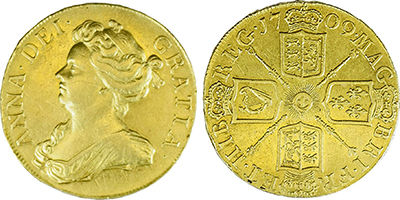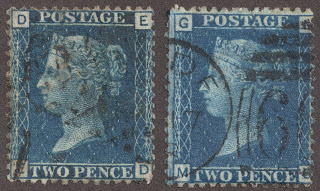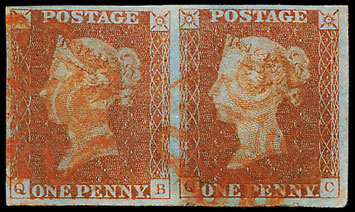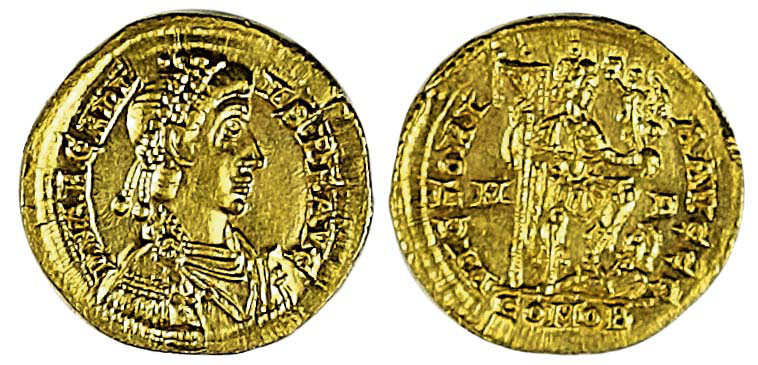Coin grading is far from easy as it remains a subjective area, where opinions vary, and there is no scientific or factual scale on which to base a grading.
Just to confuse matters even further, almost every country has its own language to explain their various coin grades.
Grading issues have caused disputes since the practice began - and will no doubt continue to do so in the future. Fortunately, there is some degree of professional consensus amongst coin collectors and dealers with regards to coin grading. But it still remains the most controversial, and most important, area of collecting.
Often referred to as an art form by numismatists, coin grading requires a lot of attention and a keen eye for detail acquired by looking at many coins over a number of years.
Having amassed the necessary experience to grade accurately, numismatists tend to specialise in specific coin types or eras, each having a different grading standard.
Here at Warwick & Warwick, our experienced experts strive to provide accurate and reliable gradings for any coins we value. The information outlined below has been compiled to explain current UK coin grading practices that are used when valuing British coins and to assist if you want to learn how to grade coins yourself.
Please remember the information contained in this coin grading guide is for guidance only. If you need an accurate coin valuation, please get in touch or seek independent professional advice.

UK coin grading terms & condition abbreviations
Learning how to grade coins yourself is possible, but it does take years of experience to conduct this task accurately and correctly.
Before attempting to make a valuation, it is important to understand the UK coin grading �tiers� and the �condition� factors which influence the value of old coins.
The main UK coin �grading� tiers:
FINE (F):A coin which shows considerable wear to all its raised surfaces, but only its highest spots are completely worn. Its main design, features, date and lettering are clearly readable.
VERY FINE (VF):A coin where all the fine detail is present, but not the 'minute' detail and signs of wear and tear to its higher points make it obvious that it has been in circulation but only minimally.
EXTREMELY FINE (EF):A coin with much of its mint lustre, sharp detailing and little sign of being circulated - with only its high spots suffering from slight wear on close inspection.
UNCIRCULATED (U):A coin that shows no wear at all, other than bag marks or minor mass production scratches, and looks as it did when it left the mint with all its finer details intact and with full lustre present.
Further abbreviations for the �condition� of UK coins:
POOR (P):In most cases, a coin which is barely identifiable because the date and most of the inscription on it has been worn away. Whilst they may hold sentimental or historical value, coins are not normally collectable unless they are very rare.
FAIR (F):Whilst the coin's date is visible and the type is recognisable, most of the other detail cannot be picked out.
GOOD (G):Sometimes referred to as mediocre, a 'good' coin is (rather confusingly) not really that good at all. Instead, they are usually quite worn, but with an identifiable date and design. This coin condition is not generally sought after by coin collectors unless it is very rare or has a historical value.
VERY GOOD (VG):Most of the 'major' details can be clearly read, but it is a coin that's suffered considerable wear over the whole of both surfaces and its high spots are worn through. A coin in this condition is only of value if it is extremely rare.
ALMOST FINE (aF):The design, features, date and lettering are clearly readable but the coin shows considerable wear to all its raised surfaces.
GOOD FINE (gF):A fine coin with date and lettering that are clearly readable, and considerable wear to all its raised surfaces, but more fine detail is present on its main design, such as hairlines.
FINE PLUS (F+):A coin that is in between 'fine' and 'very fine' grade, with only moderate wear on its higher surface features.
ALMOST VERY FINE (aVF):A coin where all lettering and major features are sharp and most of its fine detail is present. Light to moderate wear can be seen on the coin's surface and high points.
VERY FINE (VF):See above.
GOOD VERY FINE (gVF):Although some of the minute detail is present it is barely visible to the human eye and a magnifying glass is needed to see it.
VERY FINE PLUS (VF+):A coin which is between a 'very fine' and 'extremely fine' grading, with most of its minute detail visible under a magnifying glass.
ALMOST EXTREMELY FINE (aEF):A coin with much wear on its detailed higher points, such as the hair depicted on a person's head.
EXTREMELY FINE (EF): See above.
GOOD EXTREMLEY FINE (gEF):A coin with much of its mint lustre and barely visible wear on its high points, which can only be seen through a magnifying glass.
EXTREMLEY FINE PLUS (EF+):A coin showing almost full mint lustre and very little minute wear, which is only visible under a magnifying glass.
ALMOST UNCIRCULATED (aU):A coin with traces of wear at the highest points of the coin, but no other signs of use, and at least half of its original mint lustre is present.
UNCIRCULATED (U):See above.
CHOICE UNCIRCULATED (CU):A coin with only very small scratches or bag marks present, with three-quarters of its original mint lustre remaining.
BRILLIANT UNCIRCULATED (BU):An almost perfect coin, it is with no scratches, stains or damage of any kind - and still with its original, full mint lustre and shine.
PROOF:Rather than being a 'grade' of coin, this specially struck coin is an early example of an issue, made to check the dies (inverted image) used on a new coin. They can be easily distinguished by their sharper design, points and fields. Sometimes referred to as a 'Special Lustre' a 'Matt Proof' or a 'Perfect Coin' by dealers and collectors.
FLEUR DE COIN (FDC):A description which is only used when describing a proof or pattern coin - a perfect coin in the same condition as when it left the mint, with full lustre and colour.
Often a coin will wear unevenly, with each side ending up in a different condition, which can result in it being described in one way for the obverse side (head side) and another for the reverse (tails side). In this scenario, the usual practice is to list the obverse grade first. If you may see a coin graded as �VF/EF� it means the obverse side (head side) is �Very Fine� and the reverse (tails side) is �Extremely Fine�.
Some collectors will even use preceding letters to further describe a grade. For example, a 'G' for Good, 'N' for Near and 'A' for About � which can result in 'GVF' being used to describe a coin that is better than a �Very Fine� (VF) but is also not quite in the �Extremely Fine� (EF) bracket. If you see a + after some grades, this means likewise.

Seven simple steps to follow when coin grading
- Always study the coins in good light so that you can examine every minute detail, but keep 12 inches between the coin and the light source.
- Hold the coin you are grading by its edges and position it between your thumb and index finger.
- Use a magnifying glass or magnifier that will enhance objects by at least 6 to 8 times as this will highlight any small damage or bag marks.
- Be wary not to place too much emphasis on minute or minor imperfections as this can lead to under-grading.
- Rock the coin forward and backward at the same time as turning it in a circular motion as this will let you see its finer details, such as hairlines.
- Compare the �condition� of the coin to the UK Coin Grading Scale using the descriptions above and try to figure out what �tier� the coin fits into by studying it closely.
- Take your time and try not to miss anything, but do not obsess about every detail as this can cause you to grade incorrectly too.
How to ensure you never pay over the odds for old coins
When it comes to UK coin grading, advanced collectors are not in the habit of overestimating or underestimating the grade.
As an amateur, getting an estimate wrong could be the difference between paying a few pounds or a few hundred pounds � even if you�re only out by just one grade.
To prevent an error we would never advise grading from an image. Poor or misleading reproductions can make life very difficult.
If possible, always try to examine the coin in question so that you can study its weight, feel and all of the finer details.
If you�re unsure, seek professional advice
Although it is possible to learn to grade coins yourself, it will take years of experience to do it correctly.
In our experience, many collectors think their coins are in a better condition than they actually are � so always be on your guard.
Realistically, you can only stay in tune with current valuations by continually buying and selling coins, as we do here at Warwick & Warwick. This allows us to recognise any changes in collecting fashions and to know how that is impacting on realised prices.
If you intend to buy a coin that has a high valuation, we would advise you to seek independent and professional advice.
Ultimately, a coin is only worth what someone is willing to pay for it. If there is interest in it from two passionate collectors, the price could increase significantly.
Do you have a coin for our experts to value?
If you want to get a coin graded or valued by an expert, please get in touch - we�re happy to provide free coin valuations or call 01926 499031 to book an appointment.




